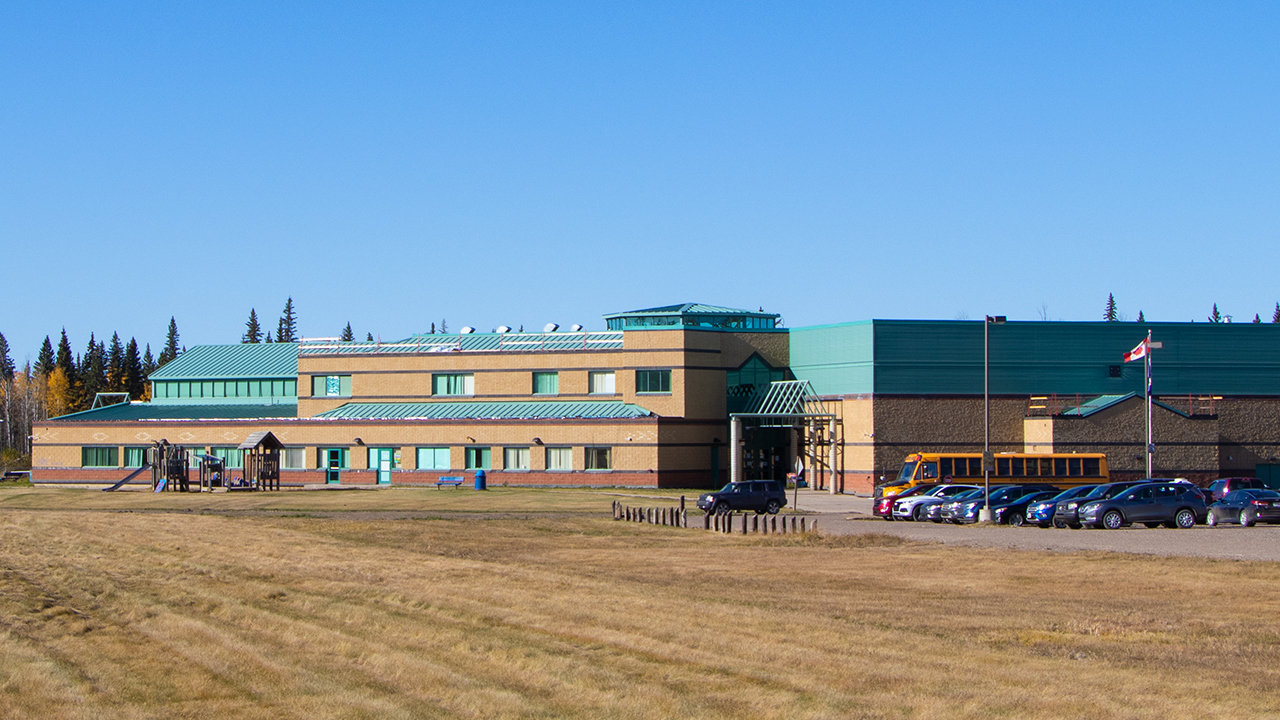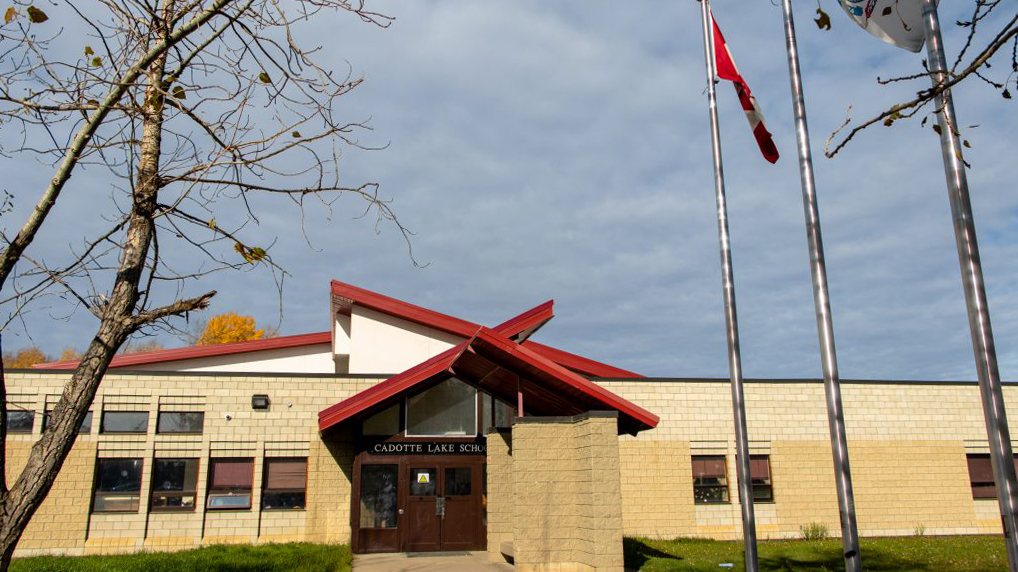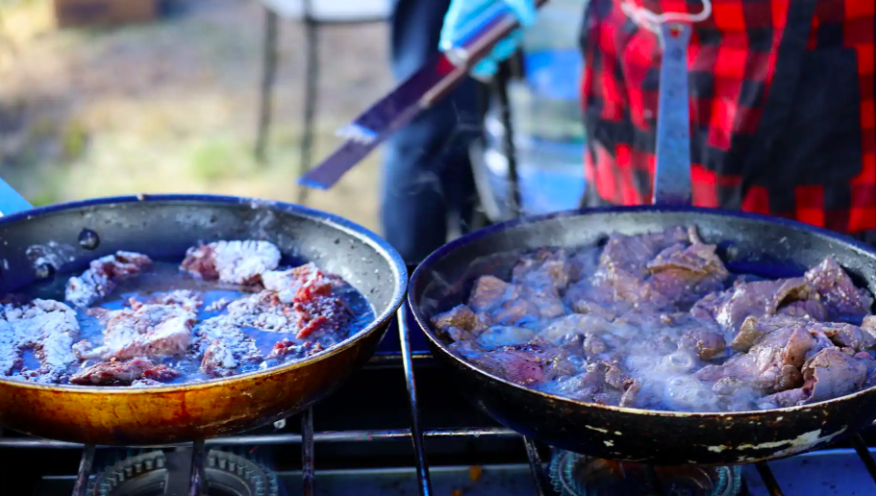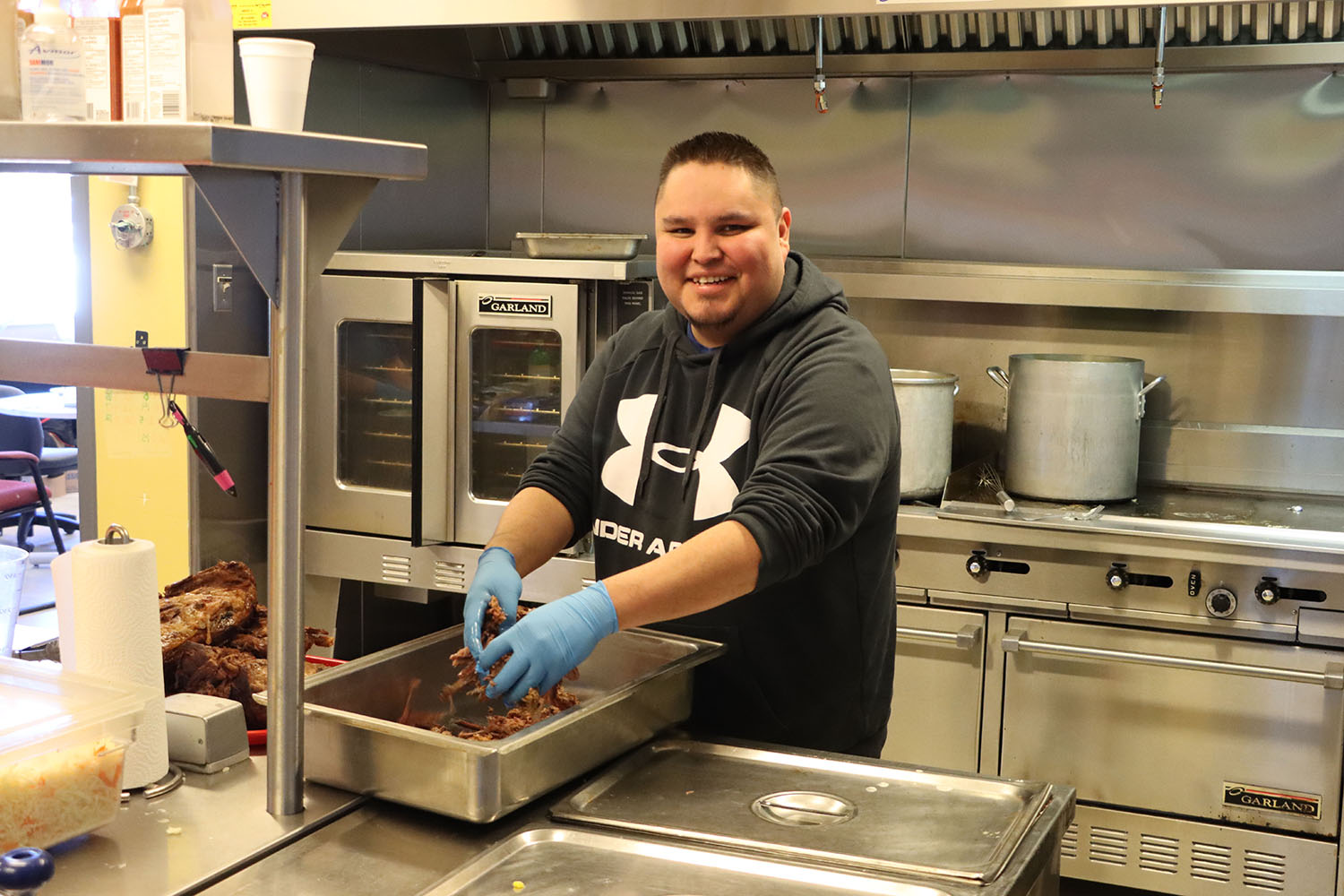“I am grateful that they [students] have this program and I want other nations to introduce this program into their communities as well.” Clifford Gladue
While sitting having a cup of tea and bannock with an Elder in his community, Clifford Gladue learned about an important document, the Alberta First Nations Food Sovereignty declaration. This document was created through the collaboration of the First Nations in Alberta.
In the conversation Clifford had with the Elder, the Elder shared that “we are losing our language and we are losing eating traditional food and there are many young people that never experienced that before.” Clifford was intrigued about the declaration and asked if he could see it. As the Food Services Manager for KTCEA, he wanted to do his part and provide students with access to traditional food.

KTCEA is comprised of five First Nations – Woodland Cree, Lubicon Lake Band, Whitefish Lake, Loon River and Peerless Trout. Within the five First Nations there are six schools – Atikameg School, Cadotte Lake School, Clarence Jaycox School, Elizabeth Quintal School, Kateri School, and Little Buffalo School. The student population in the six schools is approximately 1100 students from kindergarten to grade twelve. KTCEA has a board that oversees the education of the schools within these five First Nations. This board has three individuals from each of the five First Nations communities.
After reading the Alberta First Nations Food Sovereignty declaration Clifford approached the KTCEA board to get approval to have traditional food served in the six schools. After receiving support and approval from the board, Clifford met with the cooks to see if they would agree to provide traditional food as part of the lunch menu. With a consensus on this idea, Clifford started meeting with Elders, environmental health and safety officers and dietitians from the federal and provincial governments as well as the Fish and Wildlife department. Clifford worked with both provincial and federal governments to have traditional food served in the schools. After eleven months of conversation and many weekly meetings an agreement was made that KTCEA would be a pilot project for two years and would be the first to serve traditional food in their schools in Canada. The six schools each received a certificate that was to be placed in their kitchens. This certificate noted that they were approved to store, cook and serve wild game.
Bringing traditional food into the schools is guided by a process which includes:
- Hunters must hunt within their traditional territory and need to have a firearms license to use and carry a gun; all of this information is to be noted on the forms that are provided.
- Hunters receive bags, labels and forms from Clifford before each hunt. As proof of the purpose to hunt, hunters must carry their information including the forms in case they meet a Fish and Wildlife Officer.
- Cooks need to complete a specific part of the forms once they are given the moose or fish.
- All completed forms are returned to Clifford, and he sends them to Indigenous Services Canada to show that he is following the proper procedure.
Clifford received training on how to accept and examine the meat. As long as he sends the forms he does not need to send meat samples to the Environmental Health Inspector. He is required to inform the Environmental Health Inspector when traditional meat will be served and the Inspector will go to the schools or warehouse to inspect it.

As the Food Service Manager, Clifford works with the cooks and kitchen staff in each school. He helps order food, develop the menu and support the staff where needed. There are 16 staff on the team including Clifford. When he first started, he met with all of the cooks to develop one standardized menu for all of the schools to follow. This helped with school food orders and made sure that students were eating healthy food. In the last two years, most processed foods have been removed from the menu. Students have access to breakfast, lunch and afternoon snack every day. All food is offered to the students at no cost. Now, Clifford meets with the cooks once a month to discuss menus and if there are any concerns with the food or menu.
The meat of the moose is used for the lunch program. Other parts that are edible such as the heart, nose and tongue are not served to the students but are available for those Elders who would want them. The hide as well is available to the Elders, so nothing goes to waste. Any student that is interested in participating in the traditional meal program must have a parent sign a consent form. For those students that do not want to participate in the traditional meal program, the cooks have another meal prepared on that day.
Clifford’s long-term plan is “to offer [the traditional meal] more than twice a month. My plan is 5 or 6 times per month in school.” “I would like to bring in beaver, rabbit but also, I want the students to learn about the animals, the circle of life. How everybody supports each other. I want to bring in the herbs as well. There is a lot that the students can learn from the knowledge keepers and Elders. So, I want to help bring in all that stuff through food services.”
In collaboration with the traditional meal program is a land-based learning program. As part of KTCEA curriculum, students have access to a land-based learning program at their schools where students learn about hunting, trapping, skinning and other traditional knowledge. As well, students have become more active hunting in their traditional areas. They go on nature walks with teachers and Elders are invited to the schools to speak about plants and how they are used.
Feeding the spirit of First Nations students

From moose stew to buffalo sausage, a new program is giving students at six Cree schools in Alberta a taste of their culture and traditions
https://www.cbc.ca/newsinteractives/features/alberta-first-nations-wild-meat-school-meal-program





